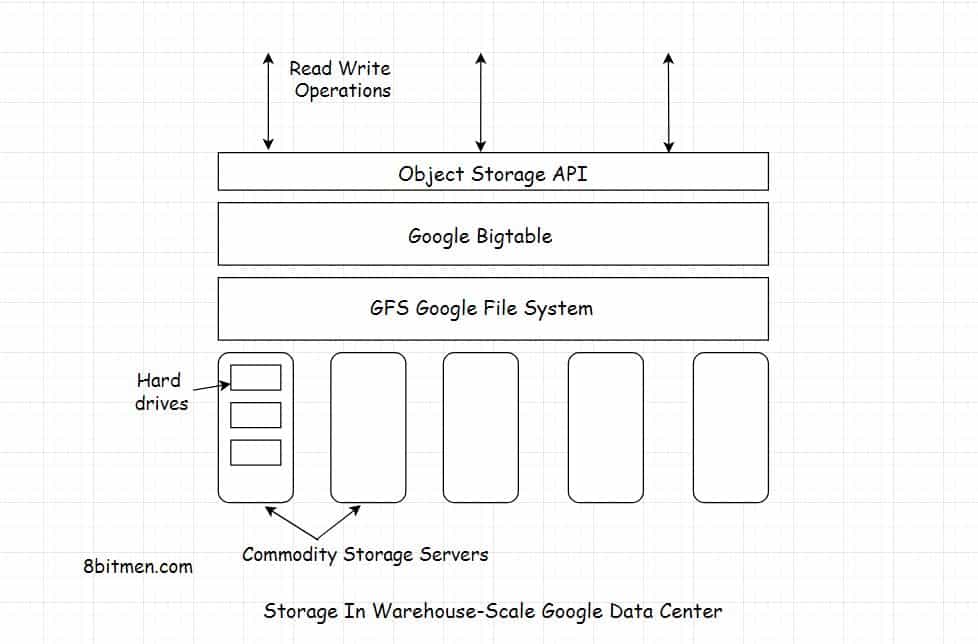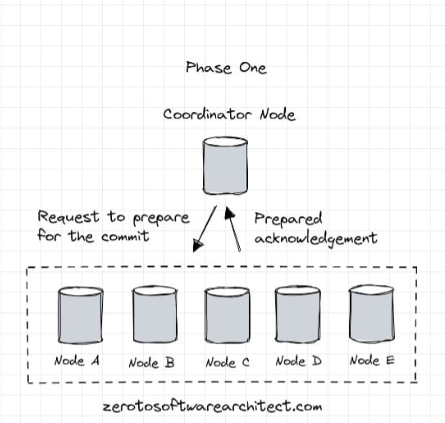Full list of distributed systems articles
Real-world distributed architectures
| What Do 100 Million Users On A Google Service Mean? – System Design for Scale and High Availability | Article Link |
| How Razorpay handled significant transaction bursts during events like IPL | Article Link |
| YouTube Architecture – How Does It Serve High-Quality Videos With Low Latency | Article Link |
| YouTube Database – How Does It Store So Many Videos Without Running Out Of Storage Space? | Article Link |
| How Hotstar Scaled With Over 11 Million Concurrent Users – An Architectural Insight | Article Link |
| How Does PayPal Process Billions of Messages Per Day with Reactive Streams? | Article Link |
| An Insight Into How Uber Scaled From A Monolith To A Microservice Architecture | Article Link |
| Facebook Real-time Chat Architecture Scaling With Over Multi-Billion Messages Daily | Article Link |
| Facebook Database [Updated] – A Thorough Insight Into The Databases Used @Facebook | Article Link |
| Facebook’s Photo Storage Architecture | Article Link |
| Instagram Architecture – How Does It Store & Search Billions of Images | Article Link |
| Twitter’s Migration To Google Cloud – An Architectural Insight | Article Link |
| What Database Does Twitter Use? – A Deep Dive | Article Link |
| An Insight Into Bazaarvoice Scalable Architecture with Over 300 Million Visitors | Article Link |
| How Evernote Migrated & Scaled their Workload with Google Cloud Platform | Article Link |
| An Insight Into the Backend Infrastructure Of A Modern Digital Bank – Monzo Architecture | Article Link |
| How PolyHaven Manages 5 Million Page Views and 80TB Traffic a Month for < $400 | Article Link |
| ‘Futures and Promises’ – How Instagram leverages it for better resource utilization | Article Link |
| McDonald’s Event-Driven Architecture – A Gist | Article Link |
| State of Backend #2 – Disney+ Hotstar Replaced Redis and Elasticsearch with ScyllaDB. Here’s Why. | Article Link |
| State of Backend #1- Distributed Task Scheduling with Akka, Kafka and Cassandra | Article Link |
| Live Video Streaming Infrastructure at Twitch | Article Link |
| Heroku Client Rate Throttling, Tail Latency and more | Article Link |
| Monzo Architecture – An Insight Into the Backend Infrastructure of a Modern Digital Bank | Article Link |
Concepts
| Monolithic architecture simplified | Article Link |
| Understanding the Actor model to build non-blocking, high-throughput distributed systems | Article Link |
| How Actor model/Actors run in clusters facilitating asynchronous communication in distributed systems | Article Link |
| CDN and Load balancers (Understanding the request flow) | Article Link |
| Understanding API Gateway and the need for it | Article Link |
| Leveraging the Backends for frontends pattern to avert API gateway from becoming a system bottleneck | Article Link |
| Application architecture explained with a real-world example | Article Link |
| IP layers and the TCP/IP model – A deep dive | Article Link |
| An Introduction to the Network File System (NFS) | Article Link |
| Distributed Data Processing 101 – A Deep Dive | Article Link |
| Distributed Cache 101 – A Deep Dive | Article Link |
| Wide-column Database, Column Databases – A Deep Dive | Article Link |
| Web application architecture explained with a real-world example | Article Link |
| What is an Instance in Cloud Computing? – A Thorough Guide | Article Link |
| How to choose the right cloud provider for your application – A thorough guide | Article Link |
Check out the Zero to Software Architecture Proficiency learning path, a series of three courses I have written intending to educate you, step by step, on the domain of software architecture and distributed system design. The learning path takes you right from having no knowledge in it to making you a pro in designing large-scale distributed systems like YouTube, Netflix, Hotstar, and more.
If you found the content helpful, I run a newsletter called Backend Insights, where I actively publish exclusive posts in the backend engineering space encompassing topics like distributed systems, cloud, application development, shiny new products, tech trends, learning resources, and essentially everything that is part of the backend engineering realm.
Being a part of this newsletter, you’ll stay on top of the developments that happen in this space on an ongoing basis in addition to becoming a more informed backend engineer. Do check it out.
Shivang
Related posts
Zero to Software Architecture Proficiency learning path - Starting from zero to designing web-scale distributed services. Check it out.
Master system design for your interviews. Check out this blog post written by me.
Zero to Software Architecture Proficiency is a learning path authored by me comprising a series of three courses for software developers, aspiring architects, product managers/owners, engineering managers, IT consultants and anyone looking to get a firm grasp on software architecture, application deployment infrastructure and distributed systems design starting right from zero. Check it out.
Recent Posts
- System Design Case Study #5: In-Memory Storage & In-Memory Databases – Storing Application Data In-Memory To Achieve Sub-Second Response Latency
- System Design Case Study #4: How WalkMe Engineering Scaled their Stateful Service Leveraging Pub-Sub Mechanism
- Why Stack Overflow Picked Svelte for their Overflow AI Feature And the Website UI
- A Discussion on Stateless & Stateful Services (Managing User State on the Backend)
- System Design Case Study #3: How Discord Scaled Their Member Update Feature Benchmarking Different Data Structures
CodeCrafters lets you build tools like Redis, Docker, Git and more from the bare bones. With their hands-on courses, you not only gain an in-depth understanding of distributed systems and advanced system design concepts but can also compare your project with the community and then finally navigate the official source code to see how it’s done.
Get 40% off with this link. (Affiliate)




Follow Me On Social Media